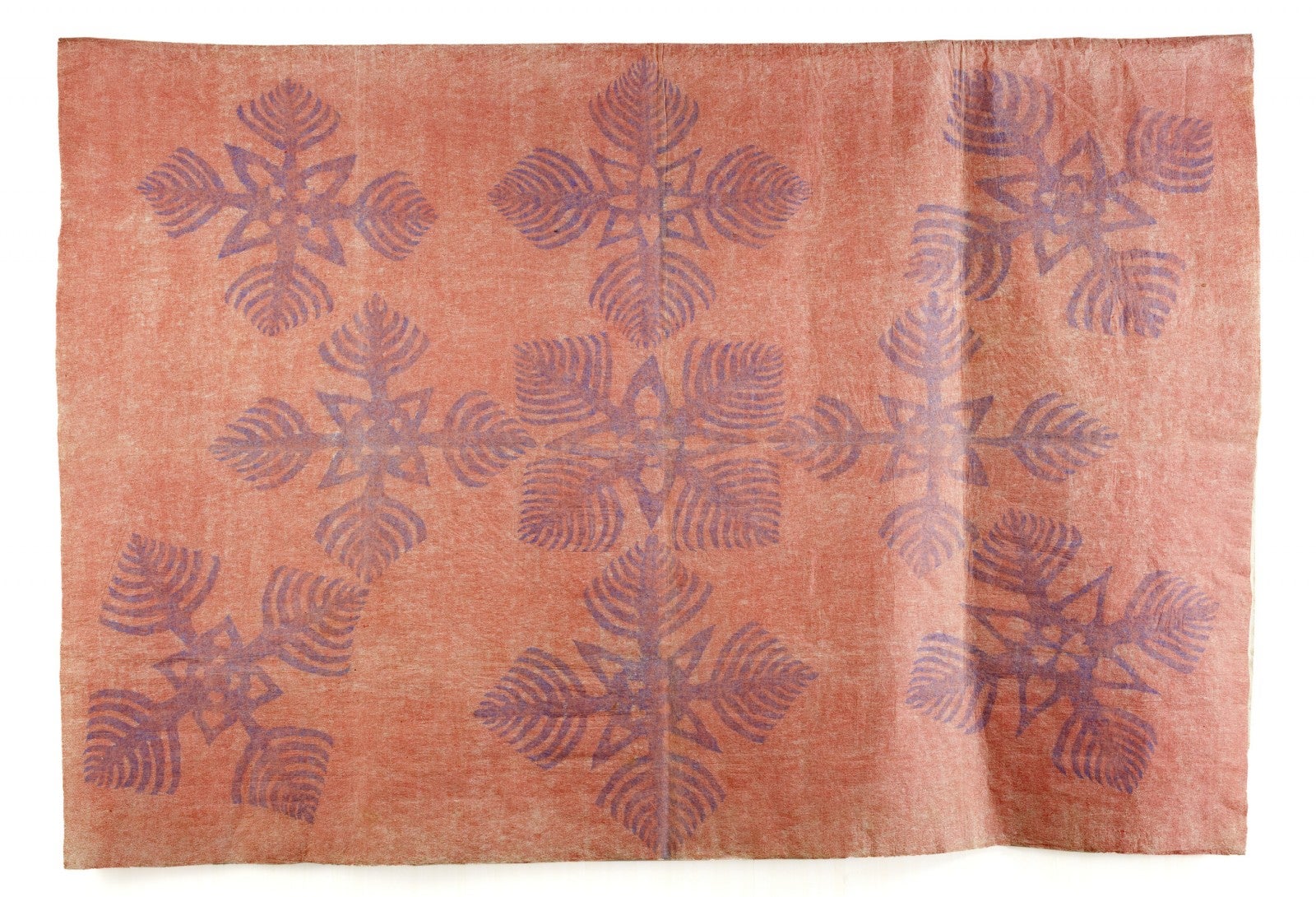Art of the Pacific: Pacific Textiles
Art of the Pacific: Pacific Textiles
The current installation of the Art of the Pacific galleries features the remarkable textiles known as tapa, or kapa in the Hawaiian Islands. In addition, select objects from LACMA’s growing permanent collection complement these textiles. The cloth is generally made from the bark of the paper mulberry tree, while fibers from other plants, such as breadfruit, banyan, wild fig, hibiscus, or banana are less commonly used. The inner bark of the mulberry is soaked, and beaten with a wooden tool against a hard surface, separating the fibers. The cloth is pounded with successively smaller grooved mallets, extending the size of the sheet and often layering or felting together the sheets to make larger pieces.
The range of painted designs is characteristic of various Pacific regions and may be stenciled, stamped, hand-painted, or dyed. The making, wearing, and gifting of tapa continues to be of great social importance to Pacific Islanders; tapa is used in weddings, funerals, clothing, dance, and as ornament.
The Art of the Pacific galleries are anticipated to close to the public on February 3, 2019 for collection inventory and packing. This work is in preparation for the construction of the new proposed building for the permanent collection designed by Peter Zumthor, which is expected to open by the end of 2023.
Barkcloth (Kapa moe), Hawaiian Islands, late 19th century, Los Angeles County Museum of Art, Ancient Art Deaccession Fund, photo © Museum Associates/LACMA
- Jan 1, 2015–Feb 3, 2019
- Ahmanson Building, Level 1
Barkcloth (Kapa moe), Hawaiian Islands, late 19th century, Los Angeles County Museum of Art, Ancient Art Deaccession Fund, photo © Museum Associates/LACMA
